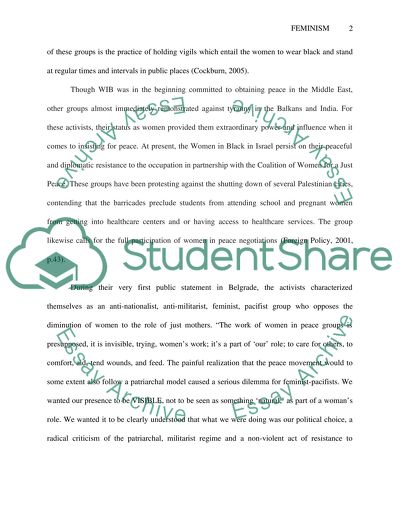Cite this document
(“Feminism and the women in black movement Essay Example | Topics and Well Written Essays - 2250 words”, n.d.)
Feminism and the women in black movement Essay Example | Topics and Well Written Essays - 2250 words. Retrieved from https://studentshare.org/miscellaneous/1534256-feminism-and-the-women-in-black-movement
Feminism and the women in black movement Essay Example | Topics and Well Written Essays - 2250 words. Retrieved from https://studentshare.org/miscellaneous/1534256-feminism-and-the-women-in-black-movement
(Feminism and the Women in Black Movement Essay Example | Topics and Well Written Essays - 2250 Words)
Feminism and the Women in Black Movement Essay Example | Topics and Well Written Essays - 2250 Words. https://studentshare.org/miscellaneous/1534256-feminism-and-the-women-in-black-movement.
Feminism and the Women in Black Movement Essay Example | Topics and Well Written Essays - 2250 Words. https://studentshare.org/miscellaneous/1534256-feminism-and-the-women-in-black-movement.
“Feminism and the Women in Black Movement Essay Example | Topics and Well Written Essays - 2250 Words”, n.d. https://studentshare.org/miscellaneous/1534256-feminism-and-the-women-in-black-movement.


